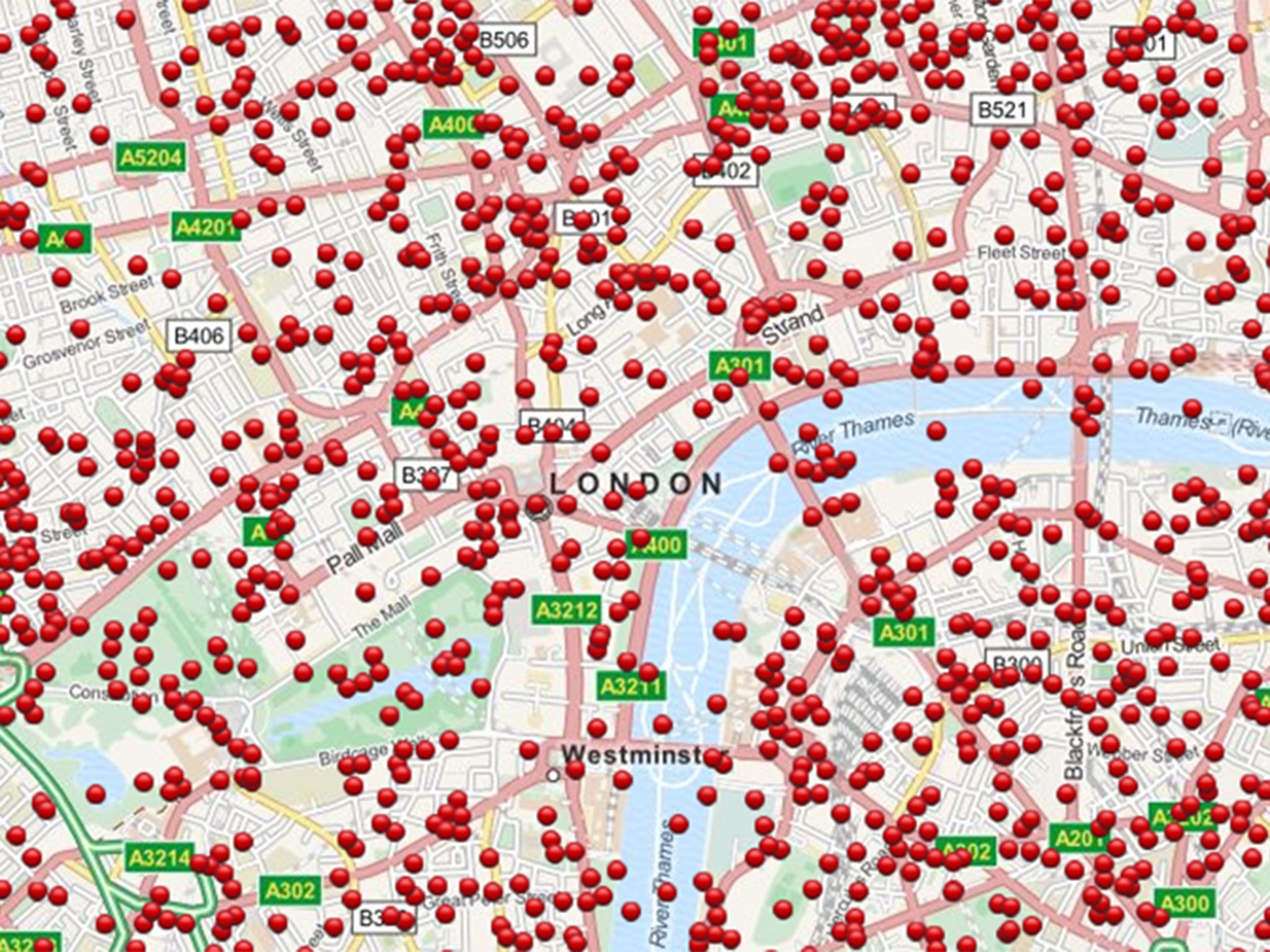Bomb Sight website maps locations of Nazi attacks in London
As many as 43,000 people died during the Blitz

Your support helps us to tell the story
From reproductive rights to climate change to Big Tech, The Independent is on the ground when the story is developing. Whether it's investigating the financials of Elon Musk's pro-Trump PAC or producing our latest documentary, 'The A Word', which shines a light on the American women fighting for reproductive rights, we know how important it is to parse out the facts from the messaging.
At such a critical moment in US history, we need reporters on the ground. Your donation allows us to keep sending journalists to speak to both sides of the story.
The Independent is trusted by Americans across the entire political spectrum. And unlike many other quality news outlets, we choose not to lock Americans out of our reporting and analysis with paywalls. We believe quality journalism should be available to everyone, paid for by those who can afford it.
Your support makes all the difference.Some 75 years after London was transformed by the Blitz, most Londoners likely seldom consider the bombs that littered the capital during World War Two.
The Bomb Site webpage is giving London’s residents to reconnect with history, by pinpointing where each bomb fell between 7 October 1940, and 6 June 1941.
During the eight-month period, Nazi aircrafts dropped as many as 30,000 bombs in London, killing 43,000 civilians - with almost half of those in London. The onslaught slowed when Hitler turned his attention to invading Russia.
Bomb Site is also available as an Android App, meaning professional and amateur historians alike can discover where bombs fell using GPS.
Compiled using the Bomb Census Map collected during the Bomb Census Survey 1940 to 1945, the project is being carried out by researchers at the University of Portsmouth, the National Archives, and web and design experts.
Dr Kate Jones, the University of Portsmouth geographer who devised the project, told BBC News: "When you look at these maps and see the proliferation of bombs dropped on the capital, it does illustrate the meaning of the word Blitz, which comes from the German meaning lightning.
"It seems astonishing that London survived the onslaught."
Join our commenting forum
Join thought-provoking conversations, follow other Independent readers and see their replies
Comments